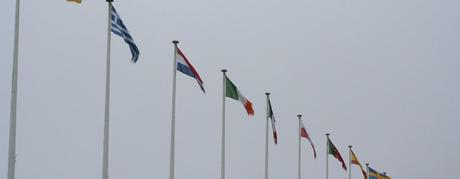
Eurostat: in 2011 Renewable Energy Share in the EU Went Up to 13%
According to the Eurostat data, in 2011 the share of the renewable energy in the EU is estimated to have contributed 13.0% of gross final energy consumption. In 2004 this figure was just 7.9%. The share of renewables in gross final energy consumption is one of the headline indicators of the Europe 2020 strategy. The target to be reached by 2020 is a share of 20% renewable energy use in gross final energy consumption. The national targets take into account the Member States’ different starting points, renewable energy potential and economic performance.
These figures are published by Eurostat, the statistical office of the European Union, and highlight the development of renewable energy sources in energy consumption in the EU27 and the Member States.
Between 2010 and 2011, almost all Member States increased their share of renewable energy in gross final energy consumption. The highest shares of renewable energy in final energy consumption in 2011 were found in Sweden (46.8% of renewable energy sources in total consumption), Latvia (33.1%), Finland (31.8%) and Austria (30.9%), and the lowest in Malta (0.4%), Luxembourg (2.9%), the United Kingdom (3.8%), Belgium (4.1%) and the Netherlands (4.3%). In 2011, Estonia was the first Member State to exceed its Europe 2020 target.
Since 2004, the share of renewable energy in final energy consumption grew in all Member States. The largest increases during this period were recorded in Sweden (from 38.3% in 2004 to 46.8% in 2011), Denmark (from 14.9% to 23.1%), Austria (from 22.8% to 30.9%), Germany (from 4.8% to 12.3%) and Estonia (from 18.4% to 25.9%).
Share of energy from renewable sources in the EU (in % of gross final energy consumption)
EU277.98.59.612.113.020
Belgium*1.92.63.04.04.113
Bulgaria9.29.39.513.413.816
Czech Republic5.96.47.28.49.413
Denmark14.916.418.622.023.130
Germany4.85.57.310.712.318
Estonia18.416.118.924.625.925
Ireland2.43.13.65.66.716
Greece7.17.28.09.211.618
Spain8.19.010.113.815.120
France9.19.19.911.411.523
Italy4.95.46.39.811.517
Cyprus2.72.83.74.65.413
Latvia32.831.129.832.533.140
Lithuania17.216.616.919.820.323
Luxembourg0.91.51.82.92.911
Hungary*4.45.05.67.68.113
Malta0.00.00.00.20.410
Netherlands1.82.22.73.34.314
Austria22.824.426.930.430.934
Poland7.06.97.29.310.415
Portugal19.320.622.322.724.931
Romania17.017.120.122.921.424
Slovenia16.115.514.619.618.825
Slovakia6.76.57.58.59.714
Finland29.029.830.531.031.838
Sweden38.341.743.947.946.849
United Kingdom1.11.41.93.33.815
Norway58.660.661.761.464.767.5
Croatia15.213.812.214.615.720
*Eurostat estimates
Renewable energy sources cover solar thermal and photovoltaic energy, hydro (including tidal, wave and ocean energy), wind, geothermal energy and biomass (including biological waste and liquid biofuels). The contribution of renewable energy from heat pumps is also covered for the Member States for which this information was available. The renewable energy delivered to final consumers (industry, transport, households, services including public services, agriculture, forestry and fisheries) is the numerator of the Europe 2020 target. The denominator is the gross final energy consumption of all energy sources; it covers total energy delivered for energy purposes to final consumers as well as the transmission and distribution losses for electricity and heat.
2004 is the first year for which the share can be calculated on a harmonized basis.
Progress towards the 2020 targets is measured against the indicative trajectory defined in Annex I of Directive 2009/28/EC. In 20 Member States the shares of energy from renewable sources in 2011 were above these trajectories.

